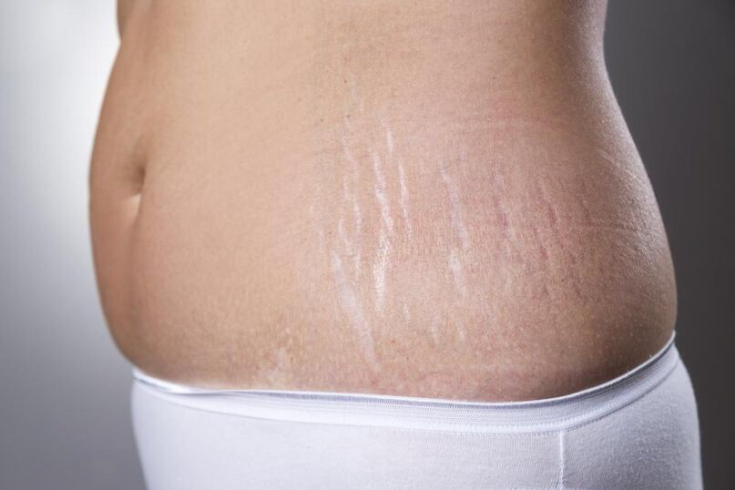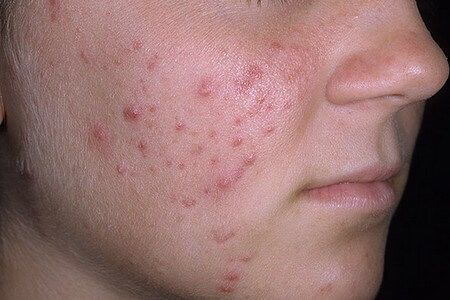Obesity is one of the major public health problems in the world with an alarmingly increasing prevalence over the past two decades. Consequences of obesity in the context of skin manifestations are underestimated, since dermal pathology is often not associated with excess weight. In this article on estet-portal.com, we will look at how an increase in body mass index affects the physiology of the skin, the skin barrier, collagen structure, wound healing and the course of other dermatological diseases.
- Obesity and the skin barrier
- The effect of obesity on the structure of collagen and the scalp
- How obesity affects the severity of acne, psoriasis and vascular changes
Obesity and the skin barrier
Various changes in barrier integrity have been associated with obesity, such as xerosis and enhanced transepidermal water loss (TEWL). Xerosis is a common feature in morbidly obese patients due to altered hydration of the stratum corneum. In a cross-sectional study of 1300 patients, stratum corneum hydration was studied by evaluating skin capacitance, and in this study, obesity was found to significantly reduce skin hydration. However, the results reported in several studies measuring transepidermal water loss (TEWL) in obese patients have been mixed. Loffler et al found higher transepidermal water loss (TEWL) in obese patients
Read also: Endocrine disorders that can cause obesity.
In contrast, one study demonstrated that transepidermal water loss was lower in obese patients, suggesting lower permeability of the skin to evaporation and thus to water loss. However, transepidermal water loss may not accurately reflect skin barrier function, so more research is needed to better elucidate the role of obesity in impaired skin barrier function.The effect of obesity on the structure of collagen and the scalp
- Collagen structure and wound healing in obese patients.

- The impact of obesity on the scalp.
A cross-sectional study confirms that the chances of premature graying of hair are proportional to increasing BMI.
Folding pachydermia is a rare disorder characterized by thickening of the scalp with gyrus-like projections and furrows and accompanies an insulin resistance syndrome in which
obesity is one of the manifestations.
How obesity affects the severity of acne, psoriasis and vascular changes- Sebaceous glands and sebum production.
Androgens, insulin, growth hormone and insulin-like growth factors are often elevated in obese patients and affect acne severity by increasing sebum production.
Obes patients sweat more profusely because they have more pronounced skin folds and thicker layers of subcutaneous fat.
Follow us on Instagram!
Furthermore, subcutaneous fat increases the frictional and moist components of the skin, which ultimately increases local inflammation, predisposing obese patients to dermatoses such as diaper rash, secondary overgrowth of bacteria, Candida fungi and dermatophytes.
Read also: Obesity in children, the first symptoms of danger.
Obesity, diabetes, and diaper rash are conditions that promote bacterial overgrowth and the development of bromhidrosis. Bromhidrosis is a chronic disease of the sweat glands, which is clinically manifested by an unpleasant body odor.
- Blood and lymphatic changes in obese patients.
- Hyperandrogenism and acne.

In women, obesity is associated with polycystic ovary syndrome, this syndrome can provoke hirsutism, menstrual irregularities, acanthosis nigricans, acne, androgenetic alopecia, seborrhea and hyperinsulinemia.
Read also: The impact of obesity on the development of polycystic ovary syndrome.
Evidence regarding the development of acne in obesity is often conflicting. However, studies confirm an increased risk of acne in people with a high BMI and insulin resistance syndrome.
- Psoriasis and obesity.
Therapy used to treat psoriasis appears to be less effective in patients with higher BMI. At the same time, there is evidence that progressive weight loss reduces the severity of psoriasis. Psoriasis and obesity share pathological pathways such as transcription of renin and cytotoxic T-lymphocyte antigen. There is also evidence that pro-inflammatory mediators involved in the pathogenesis of psoriasis circulate systemically, causing insulin resistance, endothelial dysfunction, hypercoagulability, and increased Conclusions
As the incidence of obesity continues to increase, so do the skin manifestations. Dermatologists and estheticians are currently facing an increase in patient visits due to conditions that are caused or exacerbated by a high BMI. Understanding these clinical signs and underlying systemic disorders will lead to better treatment and prevention of complications. Obesity requires an interdisciplinary approach on the part of a doctor, dermatologist and other specialists to reduce the consequences and complications of obesity.
Watch us on YouTube:







Add a comment